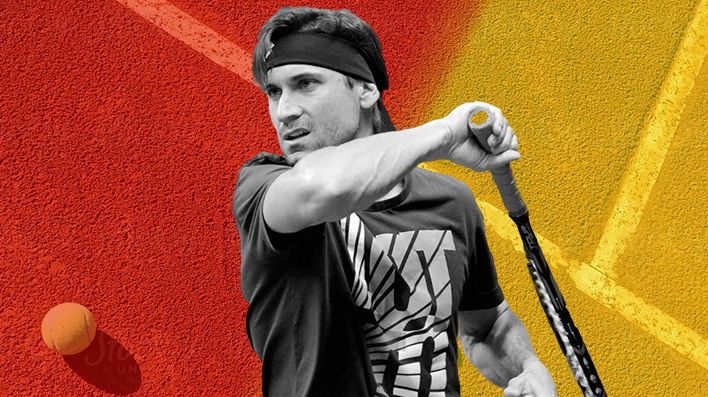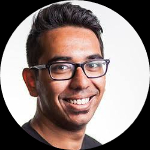David Ferrer: Carving a legacy while battling the Gods of Tennis
Two days ago, David Ferrer lost to Rafael Nadal in the pre-quarters of the Barcelona Open. Ferrer, who had revealed his intentions to retire after either the Barcelona Open or the Madrid Open, received a deafening applause from the crowd and his compatriot.
“We’re all grateful to him”, remarked Nadal after the match, echoing the thoughts of tennis fans all over the world.
With Ferrer’s impending retirement, it is interesting to look at the legacy he leaves behind. A legacy that was overshadowed by the Big Four, but one that still shines.
To shed a light on it, let me equate the Big Four era to Marvel’s Avengers.
Roger Federer would be Captain America, considering his unmatched talent and exemplary behavior on and off the court. Rafael Nadal would be Thor, a force of nature who conquered everything to become one of the greatest. Novak Djokovic would be Tony Stark/Iron Man, continuously honing his game to the highest levels, much like how Stark kept on improving his Iron Man suits.
Boxing Andy Murray in to this zany Avengers comparison is hard, so I’ll leave it to the readers’ imagination to do so
This juxtaposition, however, is not about the Big Four. It’s more about Ferrer, who could be seen as the Hawkeye of the group. A man who stood alongside a pantheon of demi-gods, and held his own. Just like the Avengers are incomplete without Hawkeye, the story of men’s tennis is incomplete without Ferrer.
Ferrer never had a killing blow like his contemporaries had like Rafa’s atomic forehand, Federer’s precise ground-strokes, Djokovic’s indomitable backhand or Murray’s deadly pace-changing. Instead, Ferrer brought in an unrivalled tenacity and court-coverage that helped him forge his path in the tennis world.
The Early Years
Born in Xabia, Alicante, Ferrer’s tennis career began when he moved to Gandia at the age 13. Two years later, he was hitting at the Catalan Tennis Federation in Barcelona, followed by a nine-month stint at Juan Carlos Ferrero’s academy, Equilite.
It was at Equilite where Ferrer experienced his first disappointment, that of the Spanish Federation sponsoring Tommy Robredo over him. An incident which put the onus of turning pro, squarely on Ferrer’s shoulders.
It was also in these years that he met his long-standing coach, Javier Piles. Piles had once locked Ferrer in a dark ball closet with bread and water for not practicing hard enough. The future Spaniard tennis player left the sport but returned a week later. Piles continued as Ferrer’s coach up until 2013.
Downing the biggest tennis star of the time
After turning pro in 2000, Ferrer rose up the ranks, winning multiple ATP Challenger titles. The biggest moment of his early career, however, came in 2003.
At the Rome Masters, he was drawn up against the then World No. 1, Andre Agassi. Despite being bageled in the first set, Ferrer mounted an impressive comeback to defeat the American legend. Displaying a strong baseline game, a style that Agassi himself was a proponent of, Ferrer registered the biggest scalp of his fledgling career.
Charting his way to the top five
In 2004 and 2005, Ferrer became a regular quarter-finals fixture at various ATP events. Consistent performances in the Masters series helped him finish as World No. 14 in 2005.
The following year, Ferrer broke into the top 10 and the world began to take notice. He reached a second consecutive Miami Open semi-final where he fell to Federer. For Ferrer, the most important feat was winning his second ATP title, defeating Jose Acasuso in five sets in a marathon five-hour final.
2007 yielded even better results for Ferrer as he steadily progressed throughout the year. He reached his maiden Grand Slam semi-final at the US Open where he was defeated by Djokovic. He capped off the impressive year with a runners-up medal at the ATP Masters Cup (now called the ATP Finals) where he lost to Roger Federer. By the end of 2007, Ferrer had broken into the Top 5.
Ups and Downs
In 2008 and 2009, Ferrer had mixed results. He won two Davis Cups as part of the Spanish team, but his results in the ATP tournaments and Grand Slams dried up.
By 2010, Ferrer was establishing himself as a clay-court specialist and reached his first Masters final in that year. After defeating long-time rival Fernando Verdasco, Ferrer advanced to the finals of the 2010 Rome Masters, squaring up against Rafael Nadal who would defeat him. A trope that would be repeated multiple times in his career.
In 2011, Ferrer upped his performances as he reached the semi-finals of the Australian Open. He scored a victory over long-time nemesis Rafael Nadal in the quarterfinals, denying a “Rafa Slam”.
The following year, Ferrer finally broke his Masters curse as he went on to capture his maiden Masters title. After reaching the 2012 US Open semi-finals, Ferrer had a victorious run at the Paris Masters. Considering his strong run on hard courts, Ferrer had evolved from being a clay-court specialist to an all-court threat.
A Grand-Slam finalist at last
Ferrer had been knocking at the doors of Grand Slam finals for multiple seasons. In 2013, he finally broke that glass ceiling as he reached the finals at Roland Garros. Arguably, the defining moment of his tennis career.
He was thrashed by Djokovic in the Australian Open semi-final that year. At Roland Garros, however, Ferrer was a different beast altogether. He stormed to the finals without dropping a single set. The man who stood in Ferrer’s way to hold the Coupe des Mousquetaires, Rafael Nadal.
Rafa had defeated Ferrer in two finals earlier in the year. The result at Roland Garros was no different as Nadal captured his (then) eighth French Open title, winning in straight sets.
Ferrer’s streak of losing in finals continued throughout the season as he lost seven consecutive finals. Despite that, Ferrer ended as World No. 3 in the rankings, his highest career ranking.
The best to have never won a Grand Slam
The Spaniard maintained a consistent level of performance in the mid-2010s, but was unable to break the hegemony of the Big Four. Ferrer did have a resurgence in 2015, winning back-to-back titles at Rio and Acapulco. He captured his 25th career title by winning the Kuala Lumpur Open and rounding up the year with a win at the Vienna Open.
Multiple injuries had taken their toll on the veteran by then and the inevitable slide down began in the following years. This was best exemplified by him being out of the Top 20 and having to retire in his first-round match against Rafael Nadal at the 2018 US Open.
Looking at his career trajectory, it was evident that Ferrer was not close to the Big Four. Being injury-prone didn’t help either. Despite the limitations, Ferrer was able to carve out a legacy as a legitimate threat, as seen in his achievements.
Reaching four Grand Slam semi-finals and a final in that era is a big achievement. To add to that, he won a career 27 ATP titles including a Masters title and ATP Finals appearance.
You could then say that his career would be defined by the statement, “close, but no cigar.”
For me, however, his legacy is that of the best to not have won a Grand Slam.
In the 1990s, Michael Jordan and his Chicago Bulls denied an NBA title to many legends, such as Charles Barkley, Patrick Ewing, John Stockton and most famously, Karl Malone.
The Big Four of the tennis did the same in their era. Ferrer, unfortunately, was the biggest victim. That, however, still does not take anything away from his legacy. His grit, determination and hard-work will always be inspirational.
Ferrer was never the primary protagonist in the story of men’s tennis. He was, however, that one supporting character who would leave an indelible mark. Just like Hawkeye does, while sharing screen space with gods, super soldiers and a genius (add playboy and philanthropist to the genius).
All I can say to close this is, “Gracias, David.”


.png)


Leave a Reply